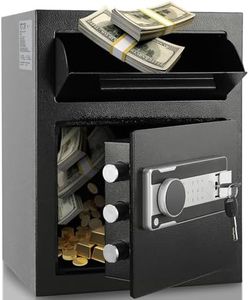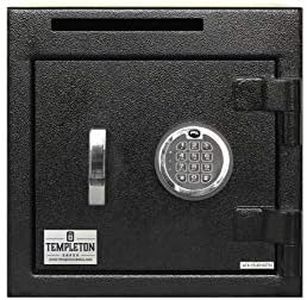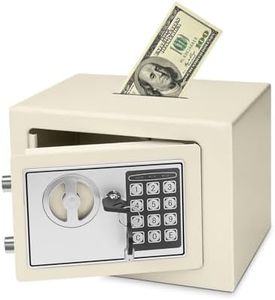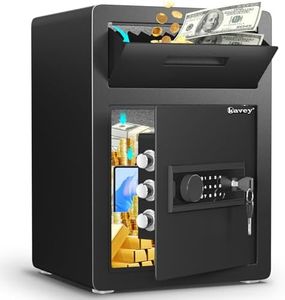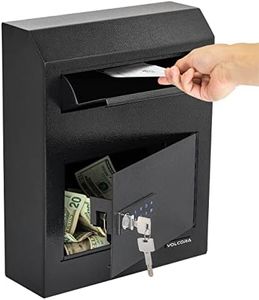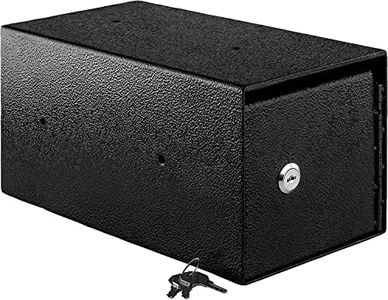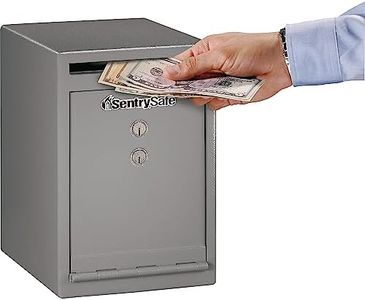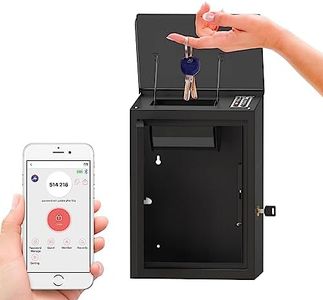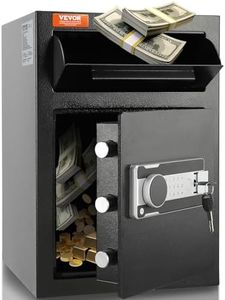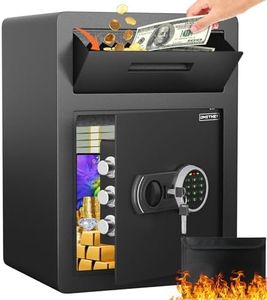We Use CookiesWe use cookies to enhance the security, performance,
functionality and for analytical and promotional activities. By continuing to browse this site you
are agreeing to our privacy policy
10 Best Drop Slot Safes
From leading brands and best sellers available on the web.Buying Guide for the Best Drop Slot Safes
When choosing a drop-slot safe, it's important to think about what you need to protect and how you'll use the safe in your daily routine. Drop-slot safes are commonly used in businesses like retail stores, restaurants, or offices to deposit cash, checks, or documents without having to open the main safe compartment. This provides convenience while keeping deposits secure from unauthorized access. To find the best safe for you, consider where you'll be placing it, the volume and size of items you'll deposit, and who will need access to the interior.Slot SizeSlot size refers to the dimensions of the opening where you drop in your money, envelopes, or documents. This is important because the slot needs to be large enough to fit what you're depositing but small enough to prevent fishing or theft. Slot sizes typically range from narrow slots suitable for cash and receipts to wider ones that can accept large envelopes or rolled coins. If you'll mostly deposit cash and small slips, a narrow slot should be secure and sufficient. For businesses handling larger documents or multiple envelopes at once, a wider slot is more practical.
CapacityCapacity measures how much total space is inside the safe for storing dropped items. Safes come in various sizes, from compact units that hold a day’s deposits to larger ones that can store several days' worth without emptying. If you have frequent deposits or need to store more items between collections, larger capacity is useful. For less frequent deposits or tighter spaces, a smaller safe may work best. Match the size to your typical deposit volume and how often you’ll empty the safe.
Lock TypeThe locking mechanism is what keeps your deposits secure. Common types include key locks, combination dials, electronic keypads, and even biometric options. Key locks are simple, but require keeping track of the key. Combination and electronic locks allow for shared or changeable codes, which can be more convenient if multiple trusted people need access. Electronic locks often allow quicker entry, while biometric locks use fingerprints for high security. Choose the lock type based on who needs access, how often you'll open the safe, and your preference for convenience versus security.
Construction MaterialsDrop-slot safes are usually made of steel, but thickness and quality vary. Heavier and thicker steel makes the safe harder to break into or remove. Some safes have pry-resistant doors and reinforced edges. If theft is a serious concern or the safe will be left unattended, go for a model with thicker walls and a strong door. For basic internal protection in low-risk settings, a lighter safe may suffice. Always consider the environment where the safe will be placed when weighing materials.
Mounting OptionsMost drop-slot safes offer ways to secure them in place, such as pre-drilled holes for bolting to floors, walls, or counters. This is important because a safe that isn’t bolted down can be carried away. If you need to keep the safe stationary and deter theft, be sure to use its mounting feature. Consider where you’ll place the safe and make sure you can use the anchor options available.
Anti-Fishing FeaturesAnti-fishing features are designed to prevent someone from reaching through the slot to retrieve deposited items. These might be baffle plates or angled mechanisms inside the slot. For locations with a higher theft risk or where the safe is accessible to many people, anti-fishing features are important for keeping deposits safe. If ease of use is more important for your situation and theft risk is low, you might not prioritize this, but it’s often wise to choose a safe with some level of anti-fishing protection.
